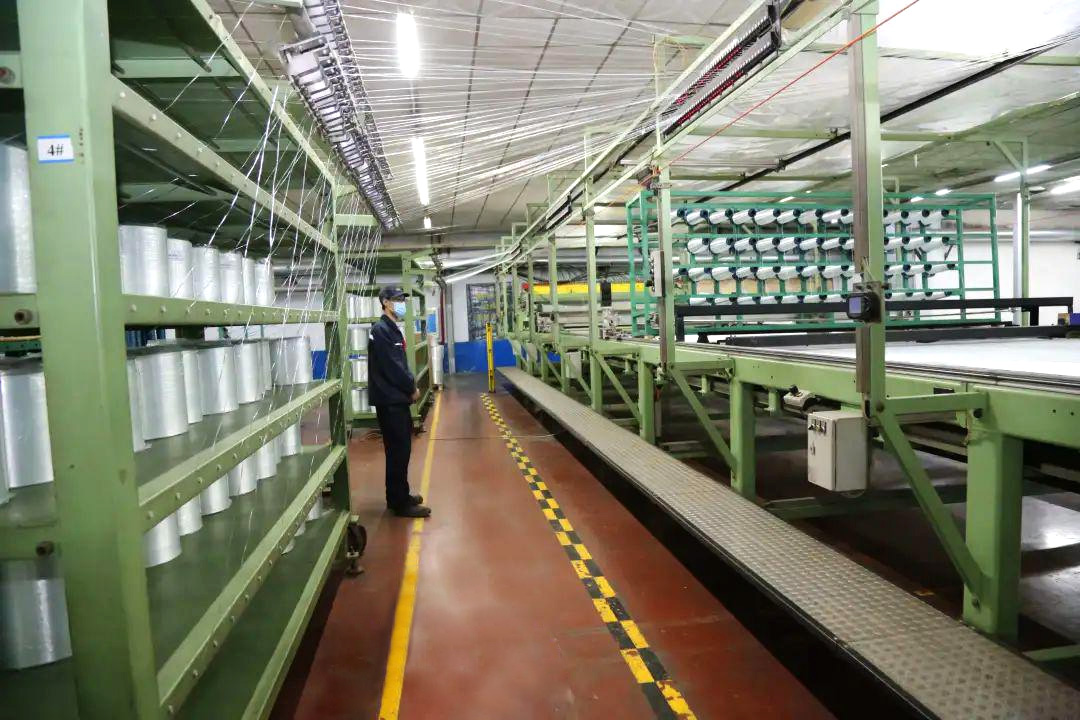When we see products made of fiberglass, we often only notice their appearance and use, but rarely consider: What is the internal structure of this slender black or white filament? It is precisely these unseen microstructures that give fiberglass its unique properties, such as high strength, high temperature resistance, and corrosion resistance. Today, we will delve into the “inner world” of fiberglass to reveal the secrets of its structure.
The Microscopic Foundation: “Disordered Order” at the Atomic Level
From an atomic perspective, the core component of fiberglass is silicon dioxide (typically 50%-70% by weight), with other elements like calcium oxide, magnesium oxide, and aluminum oxide added to adjust its properties. The arrangement of these atoms determines the fundamental characteristics of fiberglass.
Unlike the “long-range order” of atoms in crystalline materials (such as metals or quartz crystals), the atomic arrangement in fiberglass exhibits “short-range order, long-range disorder.” Simply put, in a local area (within the range of a few atoms), each silicon atom bonds with four oxygen atoms, forming a pyramid-like “silica tetrahedron” structure. This local arrangement is ordered. However, on a larger scale, these silica tetrahedra do not form a regular repeating lattice like in a crystal. Instead, they are randomly connected and stacked in a disordered manner, much like a pile of building blocks haphazardly assembled, forming an amorphous glass structure.
This amorphous structure is one of the key differences between fiberglass and ordinary glass. During the cooling process of ordinary glass, atoms have enough time to form small, locally ordered crystals, which leads to higher brittleness. In contrast, fiberglass is made by rapidly stretching and cooling molten glass. The atoms don’t have time to arrange themselves in an orderly fashion and are “frozen” in this disordered, amorphous state. This reduces defects at crystal boundaries, allowing the fiber to maintain the properties of glass while gaining better toughness and tensile strength.
Monofilament Structure: A Uniform Entity from “Skin” to “Core”
The fiberglass we see is actually composed of many monofilaments, but each monofilament is a complete structural unit in itself. A monofilament typically has a diameter of 5-20 micrometers (about 1/5 to 1/2 the diameter of a human hair). Its structure is a uniform “solid cylindrical shape” with no obvious layering. However, from the perspective of microscopic composition distribution, there are subtle “skin-core” differences.
During the drawing process, as molten glass is extruded from the small holes of the spinneret, the surface rapidly cools upon contact with the air, forming a very thin “skin” layer (about 0.1-0.5 micrometers thick). This skin layer cools much faster than the internal “core.” As a result, the silicon dioxide content in the skin layer is slightly higher than in the core, and the atomic arrangement is denser with fewer defects. This subtle difference in composition and structure makes the surface of the monofilament stronger in hardness and corrosion resistance than the core. It also reduces the possibility of surface cracks—material failure often begins with surface defects, and this dense skin acts as a protective “shell” for the monofilament.
In addition to the subtle skin-core difference, a high-quality fiberglass monofilament also has a highly circular symmetry in its cross-section, with a diameter error typically controlled to within 1 micrometer. This uniform geometric structure ensures that when the monofilament is stressed, the stress is evenly distributed across the entire cross-section, preventing stress concentration caused by local thickness irregularities and thereby improving overall tensile strength.
Collective Structure: The Ordered Combination of “Yarn” and “Fabric”
While monofilaments are strong, their diameter is too fine to be used alone. Therefore, fiberglass typically exists in the form of a “collective,” most commonly as “fiberglass yarn” and “fiberglass fabric.” Their structure is the result of the ordered combination of monofilaments.
Fiberglass yarn is a collection of dozens to thousands of monofilaments, assembled by either “twisting” or being “untwisted.” Untwisted yarn is a loose collection of parallel monofilaments, with a simple structure, primarily used for making glass wool, chopped fibers, etc. Twisted yarn, on the other hand, is formed by twisting the monofilaments together, creating a spiral structure similar to cotton thread. This structure increases the binding force between the monofilaments, preventing the yarn from unraveling under stress, making it suitable for weaving, winding, and other processing techniques. The “count” of the yarn (an index indicating the number of monofilaments, for example, a 1200 tex yarn is composed of 1200 monofilaments) and the “twist” (the number of twists per unit length) directly determine the yarn’s strength, flexibility, and subsequent processing performance.
Fiberglass fabric is a sheet-like structure made from fiberglass yarn through a weaving process. The three basic weaves are plain, twill, and satin. Plain weave fabric is formed by alternating interlacing of warp and weft yarns, resulting in a tight structure with low permeability but uniform strength, making it suitable as a base material for composite materials. In twill weave fabric, warp and weft yarns interlace in a ratio of 2:1 or 3:1, creating a diagonal pattern on the surface. It is more flexible than plain weave and is often used for products that require bending or shaping. Satin weave has fewer interlacing points, with warp or weft yarns forming continuous floating lines on the surface. This weave is soft to the touch and has a smooth surface, making it suitable for decorative or low-friction components.
Whether it’s yarn or fabric, the core of the collective structure is to achieve a performance enhancement of “1+1>2″ through the ordered combination of monofilaments. The monofilaments provide the basic strength, while the collective structure gives the material different forms, flexibility, and processing adaptability to meet diverse needs, from thermal insulation to structural reinforcement.
Post time: Sep-16-2025






